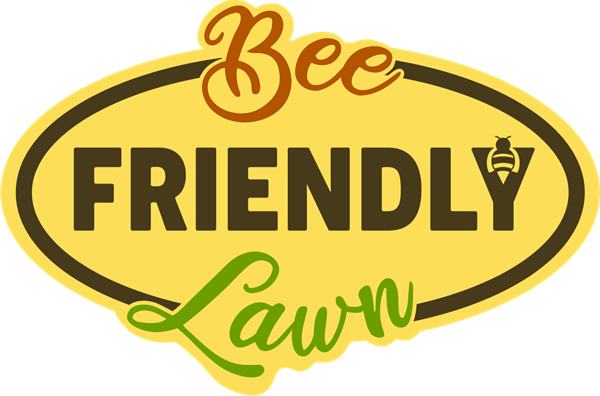Bee Friendly Lawn
How can you grow a bee friendly lawn?
You can help save our native bees. More than half the native bee species in North America are in decline. One in four species is at risk of extinction. Likely causes include habitat loss, heavy pesticide use, climate change and urbanization. More than 75% of flowering plants and crops rely on pollinators.
In Harmony works in partnership with our clients to keep lawns healthy. Follow our mowing and watering guidelines throughout the year. We will not use weed and moss killer on lawns that are not maintained properly. Integrated Pest Management guidelines say that pesticides should not be used without proper watering and mowing practices.
Join the movement to grow a bee friendly lawn.
Follow these key steps to keep your lawn healthy.
Water Deeply from May-October
- Water slowly and deeply (one to two inches per week, depending on site, soil and rainfall). Saturating the soil encourages the grass to grow deeper roots.
- Water your lawn from May to October. Don’t allow it to go dormant.
- You may want to conserve water, but a dormant lawn becomes thin and weak. This allows weeds and moss to move in and take hold.
- Our summers have become hotter and drier, making watering critical.
Mow Higher
- Set your mower height to about 2-1/2 to 3 inches. A higher lawn promotes deeper roots. It also shades the soil, which conserves moisture.
- Keep your mower blades sharp. Dull blades tear the grass, making the lawn look uneven. And jagged edges provide an easy way for diseases to enter.
- Consider using a mulch mower. Mulch mowing grass recycles nutrients. It also shades the soil, reducing evaporation. And it can suppress the germination of weed seeds.
Allow Some Flowering Plants to Grow in the Lawn
- Mason bees feed on dandelions, and many bees and other helpful insects feed on clover. Clover acts as a natural fertilizer. It fixes nitrogen, meaning it adds nitrogen back into the soil.
- Clover stays green all summer, with little or no watering. And its strength actually smothers other weeds. It is easy to remove dandelions with a hori hori knife. And you can mow flowering plants along with your lawn. Do you really need to use weed killers?
- Clover is often a sign of poor soils, low in nitrogen. Buttercup is common in acidic, poorly drained, shady and wet soils.
Invest in Some Helpful Tools
- Using an oscillating sprinkler, with a timer, will help you water the lawn deeply.
- A soil probe allows you to measure how deeply the water has penetrated.
- A hori hori knife has a deep blade that gets more of the dandelion root, reducing the chance it will grow back.
Aerate and Overseed Annually
- Aeration reduces soil compaction, helps lawn roots absorb air and water, stimulates root growth and more.
- Overseeding fills in thin and bare areas and thickens the lawn. This reduces competition from weeds and moss.
- Topdress as needed to fill in bare spots. It helps the lawn absorb water and nutrients, and it helps grass seeds to germinate successfully.
Use Organic Fertilizer Regularly
- In Harmony natural lawn care services feed the grass with organic, slow-release fertilizers to help it grow thick and strong.
- But fertilization will not result in a robust, healthy lawn if you don’t water and mow properly.
Reduce the Size of Your Lawn
- Trees and shrubs, once they are established, require less time and energy than lawn maintenance.
- They provide more seasonal interest than a lawn, with colors, shapes and aromas throughout the year.

